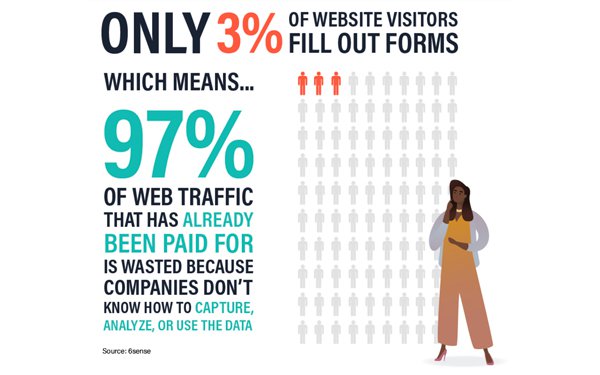Commentary
AI Hide And Seek: How B2B Brands Can ID Website Visitors And Buying Teams
- by Ray Schultz , Columnist, August 29, 2023

Business-to-business (B2B) revenue teams have a huge problem on their hands: They haven’t got a clue as to who B2B buyers are despite the plethora of data now cluttering their systems.
For one thing, B2B buyers prefer to remain anonymous. Only 3% fill out website visitor forms, leaving no email addresses or other identifiers, according to the 2023 Annual Report: Unlocking the Revenue Potential of AI for B2B, a study recently fielded by 6sense. It doesn't make any difference how good your content is.
In addition, buying committees have ballooned in size and now include up to 23 people, most or all of whom are impossible to identify.
And even if they can be identified, this leads to data overload.
“More people means more everything — emails, content, number of personas to address, activities to track, touches, etc. — which makes it exponentially harder to focus on and reach the people who matter the most,” the study says.
advertisement
advertisement
B2B marketers don’t even know who the visiting companies are in some cases — they lack contact information on 78%.
6sense recommends a solution: artificial intelligence (AI).
Granted, that cure-all is being heralded for every marketing challenge — B2B or B2C — and for many other human dilemmas.
What’s different here?
In B2B, AI “digests every account’s firmographic, technographic, and psychographic details, as well as insights from prospect keyword research, web page visits, and campaign activity. These millions of datapoints — which are far beyond a human’s ability to process — are distilled into insights that enable revenue teams to make every conversation relevant and effective.”
Let’s look at a case history — that of Custom Truck One Source, a provider of specialized truck and heavy equipment solutions, offering a vast rental fleet, new and used equipment sales, and much more.
The company has a small team, yet it faced the hurdle of selling to 45,000 to 60,000 unique monthly visitors: The old in-person engagement was no longer sufficient.
So Custom Truck One Source started using AI-powered conversational email, targeting manage-level individuals for cross-selling, post-event follow-up, closed-lost revival and high-intent account conversion.
The result? Thanks to AI-driven conversational email, the company generated 132 qualified contacts, saved 738 work hours, identified $6 million in potential pipeline—and closed $1 million worth of business.
“With conversational email, revenue teams can use AI to move prospects efficiently through the buying process without overwhelming BDRs and sales teams,” the study posits. It adds: “Companies using AI see nearly double the deal velocity, according to our research.”
It pays to have a certain skepticism about these claims. For starters, your B2B firm may not have the capacity to ingest floods of AI-generated data, and it may not have hooked up with a vendor such as 6Sense.
(For some offending firms, it might pay to make web forms easier to navigate. Don’t ask for everything when an email address would suffice. And avoid those Captcha boxes that seem like some kind of digital dementia test).
Upfront ID based on buyer intent is only one challenge. Other challenges include the tracking and marketing through the sales funnel.
The 6sense study can be found here.


